Something is smelling decidedly ‘off’ in today’s world, with nauseating levels of corruption, mass murder, lies, hypocrisy and repression. These three essays are based on three books I happen to have recently read, each of which provides fascinating but necessarily limited insights into the reality of contemporary society. Placed alongside each other, however, they can help us to identify the source of the odour.
The ruling group in our society uses its propaganda to inverse the truth of the moral relationship between itself and its opponents or victims, as we saw in the previous essay in this series.
And its manipulation is particularly convoluted with regard to the notion of conspiracy.
While the dominant group is constantly conspiring against the public in its own selfish interests, it likes nothing better than to accuse its enemies either of spreading false “conspiracy theories” about its own nefarious activities or of themselves being involved in criminal “conspiracies”.
Joseph Heller (pictured), author of the iconic American satirical novel Catch-22, said in 1973: “What illegal conspiracies have been formed more likely exist between prosecutor, judge and policeman, who draw their paychecks from the same bank account and depend for promotion on the same political superiors.
“Throughout the novel there are inquisitions, trials, sneaky undercover investigations, bullying interrogations, and numerous more cruel, unpunished acts of intimidation and persecution by people in positions of power, no matter how small, against others who are decent, innocent and harmless, or whose offences, if committed at all, are trivial.
“Much of our national experience in recent years has been characterised by the same”. [1]
There was a time, believe it or not, when exposing the conspiracies of the powerful was regarded as important by those who considered themselves to be “left-wing”, as Francis Wheen reminds us in his entertaining 2010 book about the 1970s, Strange Days Indeed: The Golden Age of Paranoia.
“The fly-poster for a radical student seminar in 1975 lists some of the recurring themes: ‘From Dallas to Watergate: Official Violence and Cover-Up – a Campaign for Democratic Freedoms Conference. Films. Panels. Workshops on Assassinations. Intelligence. Community/Labor Repression”. [2]
Thanks to the system’s efforts to smear any such analysis as “conspiracy theory”, fuelled by “paranoia” and “right-wing extremism”, it started to disappear from “respectable” view.
The hidden machinations of power were now only of interest to “alienated activists on both the Left and the Right, united in a pathological mistrust of Them”, [3] as Wheen rather snarkily puts it.
But, to the disappointment of those in power, the questioning outlook never completely went away.
After the Oklahoma bombing of 1995, a New Yorker article complained about “views that have long been shared by both the far right and the far left, and that in recent years have come together, in a weird meeting of the minds, to become one, and to permeate the mainstream of American politics and popular culture. You could call it fusion paranoia”. [4]
Of course, what was really happening was that people from different political backgrounds were becoming aware of the same reality regarding the identity, nature and activities of the ruling group.
But that was something that would never be admitted by the system’s faithful journalists, hundreds of whom, in the USA, were connected to the CIA. [5]
Instead, the response, from the 1970s onwards, was to go on the attack against the kind of unauthorised thinking labelled “sectarian” in both Nazi Germany and 2020s France. [6]
Max Lerner raged in the Los Angeles Times in 1972: “It is a climate of paranoia, in which people feel surrounded by deceivers and betrayers, by false leaders…
“This climate is not confined to the political Right or Left: it applies to both, has been fed by both, and men from both sides have been its victims and have been shot down.
“Yet both are irrelevant to it in a deeper sense. For it goes beyond the political spectrum. It becomes an egomania – the delusion that because the time is out of joint it is one man’s role to set it right by his action.
“It is part of the wider erosion of authority and legitimacy that has been taking place for a decade”. [7]
How tellingly close this is to the official propaganda in France described by Eric Hazan, with its warning of threats to order and “the end of authority”! [8]
Wheen (pictured) remarks: “Political rulers have a Masonic solidarity that can transcend ideological differences, such as that between authoritarian Communism and capitalist democracy, bonded by their common desire for obedience and loyalty – and, of course, the retention of power”. [9]
But was it really just this sense of “solidarity” that led, for example, Richard Nixon, who was very close to Henry Kissinger, to become the first US president to visit both the Communist USSR and Communist China? [10]
Or was author Gary Allen on to something when he declared at an August 1972 press conference: “There is a conspiracy to set up a one-world socialist government through which ‘they’ will control the world…
“Since around 1960 or certainly 1962, Richard Nixon has knowingly been an agent of the Rockefeller family, which is the ruling force in the Council on Foreign Relations, which favours a one-world super-state, which they would control”? [11]
Wheen notes: “Conspiratorial theories of both right and left often converged on the same suspects – the Council on Foreign Relations, the Bilderberg Group, and other well-connected outfits where the permanent government met to direct the world from behind closed doors”. [12]
There is certainly good reason for that convergence of suspicion, as I can myself testify after researching the backgrounds of those involved in the UK counterpart of the Council on Foreign Relations, namely Chatham House – the Royal Institute of International Affairs. [13]
Needless to say, the system does not just use propaganda and smears to stop people from exposing or challenging its monopoly on power.
American dissidents had, since 1956, been targeted by Cointelpro, which went far beyond intelligence-gathering, with its aim being to “discredit, destabilise and demoralise” any group or individual considered a threat. [14]
Political repression was also in the air in the UK in the 1970s – to the point of there nearly having been a military-backed coup d’état.
The identity of some of those involved in the conspiracy is very interesting indeed.
The “crisis” was sparked by the return to power of the Labour Party, later transformed into a neoliberal tool by Tony Blair and now Keir Starmer, but at the time headed by Harold Wilson, who was regarded by Sir Walter Walker (pictured), a former commander-in-chief of Nato’s Allied Forces Command, as a “proven Communist”. [15]
Wheen explains that Walker was the chosen front man for “top people in boardrooms” [16] who had big plans to change the UK.
“What the country needed, and now quite urgently, was a ‘businessman’s government’ led by – well, by businessmen such as themselves, along with a retired army general to impose order and discipline”. [17]
After trying to enlist supporters for his “Civil Assistance”, an organisation regarded by many as a kind of militia, Walker “decided that private chats with grandees and money-men might be rather more productive than appeals for mass support in the correspondence columns of the Daily Telegraph, which had been his previous tactic”. [18]
“The general was introduced to representatives of Consolidated Goldfields, Anglo-Eastern Bank, Lazard Brothers, M&G Unit Trusts, Cazenove and Cater Ryder & Co”, [19] explains Wheen.
“The only politician present, the dry-as-dust right-winger Nicholas Ridley MP, was ‘talking in riddles’, according to Walker’s account. ‘It seemed to me that what he was trying to convey, but hadn’t the guts to say openly, was that the only hope for this country would be a military coup'”. [20]
Another of these meetings was hosted by Sir Val Duncan, chairman of Rio Tinto Zinc [21] – Rio Tinto is, like the aforementioned Consolidated Goldfields, a longstanding Rothschild entity. [22]
Duncan told leading journalists invited to the dinner: “When anarchy comes, we are going to provide a lot of essential generators to keep electricity going, and we invited you, the editors, to tell us if you can maintain communications to the people. Then the army will play its proper role”. [23]
A few days later, a small item in the Daily Telegraph noted that “as well as supplying uranium, copper and other metals, Rio Tinto Zinc is also in a position to furnish a coalition government should one be required”. [24]
What the conspirators had in mind, says Wheen, was “a junta on the South American model” [25] and they had been greatly enthused by recent events in Chile.
“Conservatives in Europe and the US who had applauded the Chilean coup of 1973 watched with even greater admiration as General Pinochet gave his country a course of economic ‘shock treatment’ prescribed by the Chicago economist Milton Friedman as the cure for hyper-inflation – deregulation, privatisation, cuts in tax and in social spending.
“It was what Margaret Thatcher later applied to the UK, and even before her election to the Tory leadership in 1975 some proto-Thatcherites decided that this was the remedy for the British disease: an unfettered free market combined with an authoritarian government…” [26]
All sorts of outlandish detail about this coup conspiracy has subsequently come out – Cunard shipping line was asked by the army and secret services to lend them the QE2 liner “as a floating prison for the Cabinet” [27] and there was apparently an army-linked scheme to install the Queen’s husband Prince Philip as president of the UK. [28]
MI5 agent Peter Wright (pictured), later author of Spycatcher, spread the rumour that the PM, Wilson, was a Soviet agent.
Wheen explains that Wright initially had the idea of going public, revealing the existence of the MI5 file on Wilson, but had “second thoughts” following a conversation with “his friend Lord [Victor] Rothschild”. [29]
A Plan B emerged, as Wright detailed in Spycatcher: “The plan was simple. MI5 would arrange for selective details of the intelligence about leading Labour Party figures, but especially Wilson, to be leaked to sympathetic pressmen.
“Using our contacts in the press and among union officials, word of the material contained in MI5 files and the fact that Wilson was considered a security risk would be passed around”. [30]
Wheen adds that although Wright was keen on this plan, “once again Lord Rothschild (pictured) persuaded him to reject it”. [30]
Was this mere advice from a “friend” or something closer to the giving of orders?
More generally, what exactly is behind this thing we call the system or the criminocracy?
What are the connections between totalitarian regimes of the past and neoliberal states today?
Is there an underlying continuity that we can identify?
Somewhat surprisingly, the most lucid analysis in this particular book comes from German resistance fighters more plausibly given the “terrorist” label so widely applied to all kinds of dissidents.
The Bewegung 2. Juni, who killed the president of West Berlin’s supreme court, Günter von Denkmann, in November 1974, “issued a communiqué pointing out that he had been a judge in the Nazi era”, [31] writes Wheen.
Hanns Martin Schleyer, president of the German employers’ federation, who was kidnapped and murdered by the Rote Armee Fraktion (RAF) in 1977, had been a Hauptsturmführer in the SS. [32]
Ulrike Meinhof of the RAF (pictured) said in 1972 that Nazism “was only the political and military precursor to the imperialist system of multinational corporations”. [33]
Defending the killing of Israeli athletes at the Olympic Games in Munich by Palestinians from the Black September guerrilla group, she argued that the anti-imperialist nature of the attack was enhanced by the fact that it had happened in Germany.
“The comrades of the Black September movement have brought their own Black September of 1970 – when the [Israeli-backed] Jordanian army slaughtered more than twenty thousand Palestinians – home to the place whence that massacre sprang: West Germany, formerly Nazi Germany, now the centre of imperialism.
“The place from which Jews of Western and Eastern Europe were forced to emigrate to Israel, the place from which Israel derived its capital by way of restitution, and officially got its weapons until 1965”. [34]
I am sure I do not need to remind people that Israel – which has been doing its best for the last year to become as reviled across the world as was Nazi Germany – came into existence thanks largely to the efforts of the Rothschild family. [35]
See also:
The stench of the system: sayanim
The stench of the system: propaganda
[1] Joseph Heller, ‘Catch-22 and Disorder in the Courts’, Crawdaddy, August 1973, cit. Francis Wheen, Strange Days Indeed: The Golden Age of Paranoia (London: Fourth Estate, 2010), p. 130. Thanks for the book, Martin!
[2] Mark Harris, ‘Conspiracy to the Left of Us!’, New York Times magazine, 24 August 1975, p. 12, cit. Wheen, p. 284.
[3] Ibid.
[4] Michael Kelly, ‘The Road to Paranoia’, New Yorker, 19 June 1995, p. 67, cit. Wheen, p. 299.
[5] Wheen, p. 280.
[6] See ‘The stench of the system 2: propaganda’.
[7] Max Lerner, ‘The Climate of Paranoia is the Culprit’, Los Angeles Times, 19 May 1972, p. C7, cit. Wheen, p. 299.
[8] See ‘The stench of the system 2: propaganda‘.
[9] Wheen, p. 162.
[10] Wheen, p. 289.
[11] Wheen, pp. 289-90.
[12] Wheen, p. 300.
[13] Paul Cudenec, ‘Power and corruption: the public-private imperial mafia’.
https://winteroak.org.uk/2024/05/15/power-and-corruption-the-public-private-imperial-mafia/
[14] Allan M. Jalon, ‘A Break-in to End All Break-ins’, Los Angeles Times, 8 March 2006, cit. Wheen, p. 173.
[15] Wheen, p. 252.
[16] Ibid.
[17] Ibid.
[18] Ibid.
[19] Ibid.
[20] Stephen Dorril and Robin Ramsay, Smear! Wilson and the Secret State (London: Fourth Estate, 1991), p. 283, cit. Wheen, p. 252.
[21] Wheen, p. 254.
[22] See Niall Ferguson, The House of Rothschild: The World’s Greatest Banker 1849-1999 (New York: Penguin, 2000).
[23] Wheen, p. 255.
[24] Ibid.
[24] Ibid.
[25] Wheen, p. 255.
[26] Wheen, p. 256.
[27] Wheen, p. 255.
[28] Wheen, p. 256.
[29] Wheen, p. 262.
[30] Peter Wright, Spycatcher (New York: Viking Penguin, 1987), p. 369, cit. Wheen p. 263.
[30] Wheen, p. 263.
[31] Wheen, p. 90.
[32] Ibid.
[33] Wheen, p. 91.
[34] Stefan Aust, The Baader-Meinhof Complex, translated by Anthea Bell (London: Bodley Head, 2008), p. 182, cit. Wheen, p. 89.
[35] https://www.thejc.com/news/features/a-family-that-helped-build-a-new-nation-kkakggbe
PS. More evidence of very connections between Nazi Germany and the current globalist conspiracy can be seen in Ben Rubin’s reporting for UK Column News on October 21, 2024.

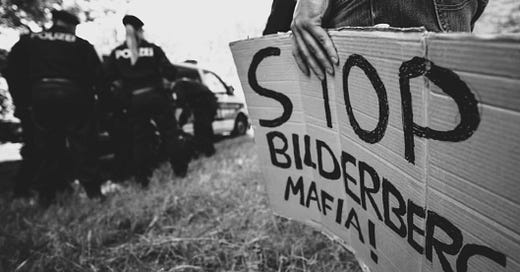



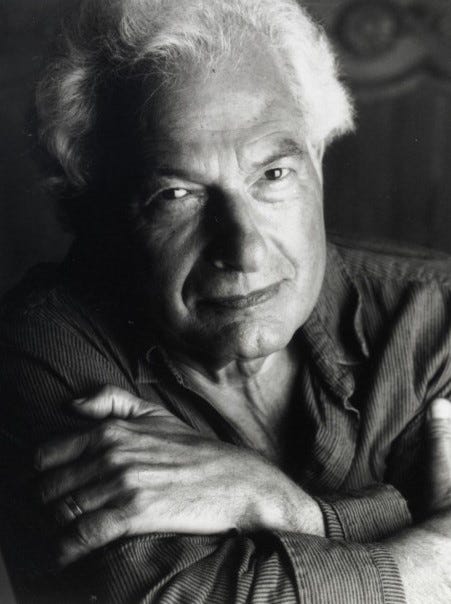
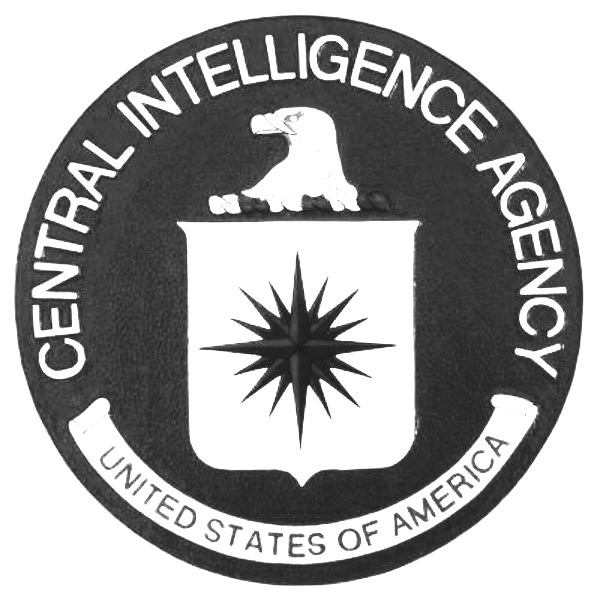

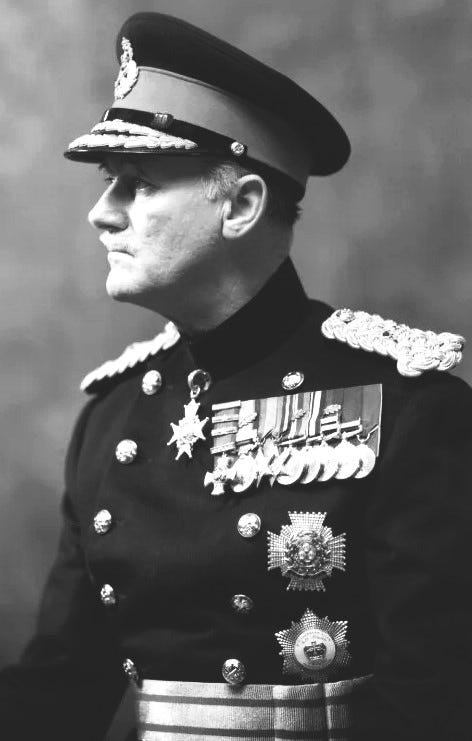
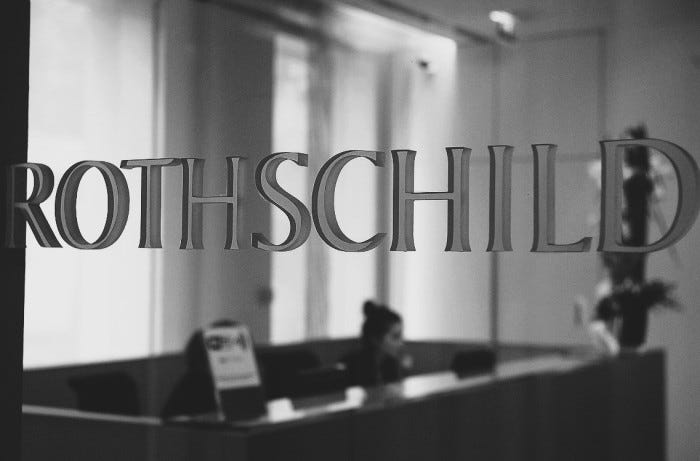

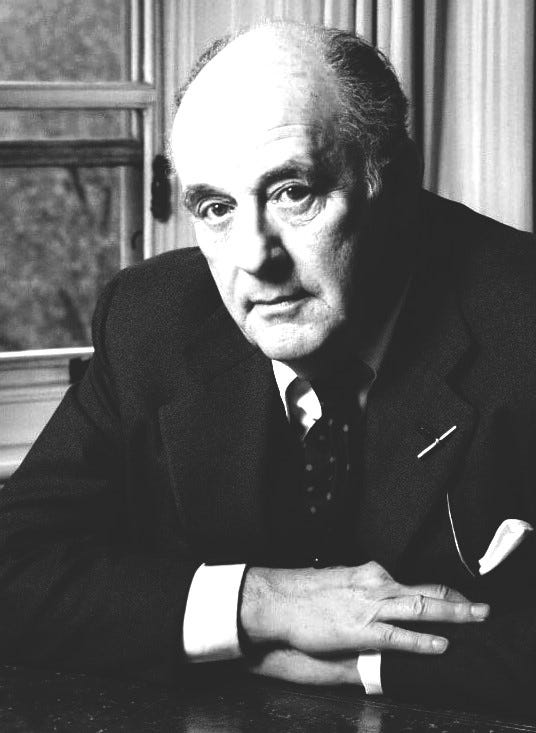


Thanks! So much ground covered that's new to me ... and, I suspect, to most.
Nothing new under the sun, is there Paul? Thanks for this heroic effort to assist us in getting to grips with this centuries long entanglement.
As a child in the 1950s I listened to parental talk about wartime, politics, propaganda, concentration camps, rationing, etc. and there were plenty of radio and, later tv programmes about it. My brothers and I were encouraged to become, at least a little, informed by these. We were too young really and found it all tiresome of course!
These days I thank them both for their insistence upon us being aware of the ways of the world back then, it has led me to where I am today with all the promise of disclosure! Your hard work of producing relevant information in an appealing format is much appreciated, I'm looking forward to reading more!